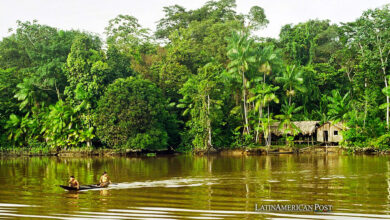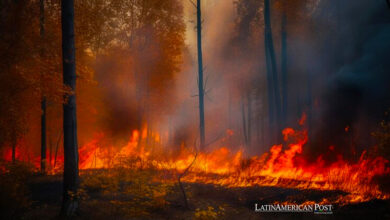How can I contribute to the restoration of ecosystems?
The restoration of the systems is in our hands. Here we tell you what you can do to change the tendency.

We are in a race against time, where it is necessary to unite all possible efforts both from governmental and organizational parties and from us as individuals. Photo: Pixabay
LatinAmerican Post | Vanesa López Romero
Listen to this article
Leer en español: ¿Cómo puedo aportar a la restauración de ecosistemas?
Humans and all the animal and plant species that inhabit planet Earth depend on the ecosystems. Likewise, our health, well-being and the foundations on which we have built societies, such as the economy, culture and politics, are affected by ecosystem changes, whether for better or for worse. So far, human beings have misused the natural resources that the Earth offers us and consequently we are facing the climate crisis, pollution crisis and biodiversity crisis. But, the most important thing about this is that we are in a race against the clock, where it is necessary to unite all possible efforts, both from governmental and organizational parties and from us as individuals.
Also read: These are the sustainable consumption trends for 2021
From this a clear question can arise: what can I do from my possibilities to the fight against the clock where the environment is on risk? The first thing to keep in mind is that, being a society, we must all be on the same page so that our actions have the results we want to obtain. Some of the clearest goals we have is to comply with the Sustainable Development Goals and the Paris Agreements , actions that depend largely on the measures taken by world leaders, governments and large companies and industries. Although we can individually align ourselves with these initiatives, landing them in our daily and personal life becomes somewhat difficult, as there are no specific guides.
As a result, the United Nations Environment Program (UNEP) decided to publish a guide regarding the start of the United Nations Decade on the Restoration of Ecosystems 2021-2030, which will be held on June 5 , World Environment Day. This guide is intended to provide an introduction to the actions that are necessary to delay and halt ecosystem degradation with a specific focus on individual actions and eight types of ecosystems: "forests, croplands, grasslands and savannas, rivers and lakes, oceans and coasts, towns and cities, peatlands and mountains . "
Podemos restaurar las tierras agrícolas, si:
Plantamos más árboles en los campos
Apostamos por cultivos más diversos
Adoptamos la agricultura regenerativaEste #DíaMundialDelMedioAmbiente, únete a la #GeneraciónRestauración: https://t.co/acPeM2Bkre pic.twitter.com/uyfHKvTyos
— Programa ONU Medio Ambiente (@unep_espanol) May 18, 2021
The guide offers a broad but simple explanation of the specific needs of each of the ecosystems , as well as a series of actions that can be taken while being aware of our carbon footprint and the need to reduce it. These individual actions are focused on three specific paths:
- "Take steps such as starting or supporting a restoration project on the ground." This can be done financially or from creativity and social union.
- "Make smart decisions, like buying only sustainable products and changing your own diet." This in order to change our forms of consumption to be more responsible and circulate.
- "Raising Your Voice in Support of Ecosystem Conservation and Restoration." Make use of the platforms we have to move this type of initiative and share our own experiences.
Likewise, the guide invites to share processes, experiences, ideas and initiatives with UNEP, in order to produce changes of great impact from the individual.




